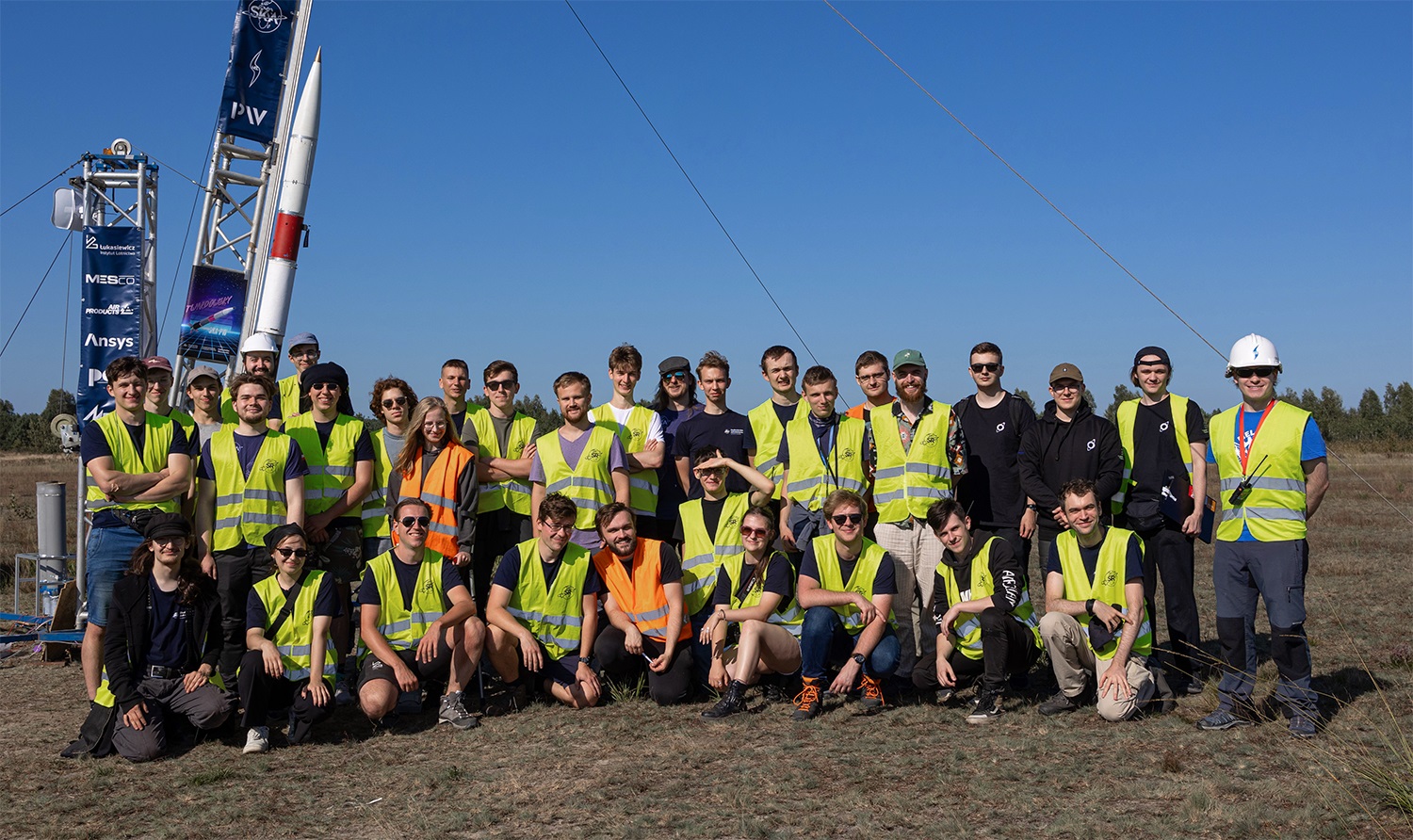The first WUT rocket with a hybrid drive has been launched

This was the launch of the Twardowsky rocket, photo: Student Space Association
17 September 2023, 16.55 – we write this date down in our university calendar and tag it #spacewow. It was then when the successful flight of a rocket with a hybrid drive happened in the history of the Warsaw University of Technology. Twardowsky – as the machine is called – is the work of the Student Space Association.
The Twardowsky rocket was designed to test a new type of rocket drive, a hybrid engine, which is a new type for the Association. Previous rockets (Grot, FOK – developed at present and historic ones: TuCAN, Amelia and H1) used a solid propellant.
– The hybrid drive uses solid fuel and a liquid oxidiser – explains Alicja Kwitek, coordinator of the SKA Rocket Section. – These engines are more complicated in their structure and operation than solid propellant engines. Their clear advantage is a much higher level of safety.
The flight
During the test flight, which took place on the Lipa polygon, there were four minisatellites, i.e., CanSats, on board of the rocket. One of them was constructed by the Student Association from the Kraków University of Technology, COSMO PK, another one was created by Mateusz Sochacki, MSc – an assistant professor at the Faculty of Power and Aeronautical Engineering, and the other two were developed by Tomasz Miś, PhD.
– The launch campaign of the rocket was no easy task – admits Alicja Kwitek. – We spent many evenings in the workshop working on the very preparation of the construction for the flight. At the polygon we had to face many difficulties. High temperature and lack of shelter from the sun did not really help.
The rocket was filled with a smaller amount of oxidiser (for safety reasons). The Twardowsky rocket engine used nitrous oxide N2O as the oxidiser and HTPB as the fuel. Twardowsky reached the altitude of 1400 metres. Then the rocket parachute was launched.
– Unfortunately, the main parachute did not open but still we managed to recover the rocket and CanSats – says Alicja Kwitek.
Years of work and new goals
Work on the drive system has given Association members broader knowledge on hybrid drives and propellants used in them. Multiple tests of the system required advanced test and safety procedures, finally verified on the polygon. Explanation of the reasons for malfunctioning of the recovery system will contribute to being able to avoid the same mistakes in future constructions of the Rocket Section.
Our students worked on the Twardowsky rocket since 2019. Over that time, over 70 people were involved in the project. The last two years were mainly spent in the workshop, where the rocket was prepared for flight.
At present, the team is working on the continuation of the project in the form of a new rocket, which is called Twardowsky 2. Its parameters significantly differ from the previous version, for instance its final altitude is not 3 km but an impressive level of 30 thousand feet (i.e., 9144 metres). Therefore the rocket will be much bigger than the previous version.
– When working on Twardowsky 2 we carefully analyse all conclusions drawn from the first project to avoid making the same mistakes – says Alicja Kwitek. – We are working not only to further develop hybrid drive technology in our Association but we are also thinking about participating in competitions such as EUROC or Spaceport America Cup.








